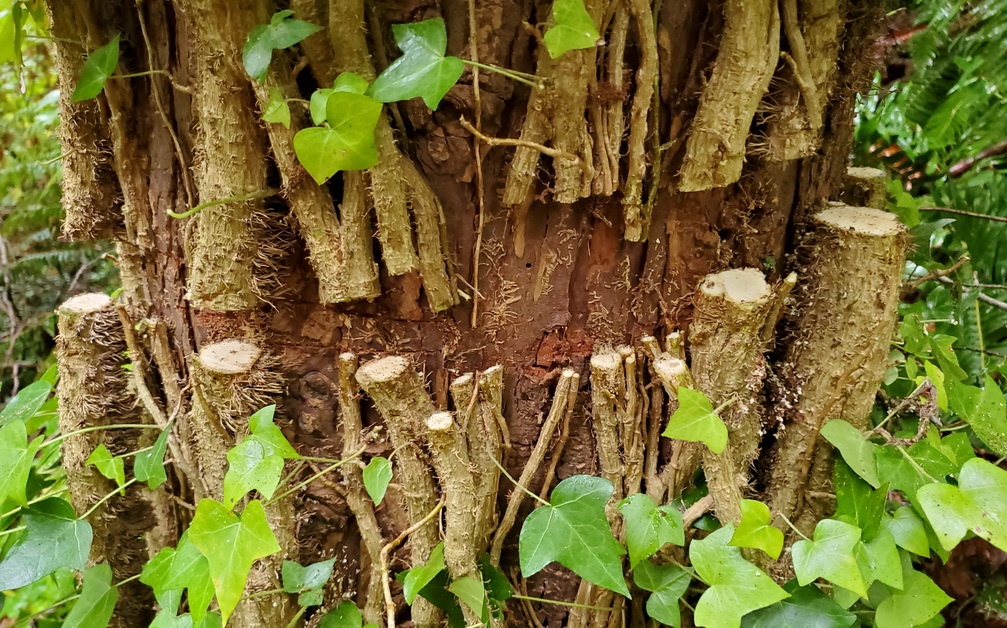We had a half inch of rain in the last couple of days, not enough to saturate the soil and make it easier to remove invasive plants, but enough to remind me that the dry season won’t last forever. Come November, after we get a few inches of rain, I want to start removing beds of Ivy and patches of Holly and Laurel from an area I haven’t worked in before. However, I got started today on some preliminary work. Specifically, found a good place to make a compost heap and built the base.
Ring Cuts and Survival Rings for Ivy on Trees
I also did ring cuts on old-growth Ivy on two dead trees and three live trees. Ivy removal always begins with ring cuts, which can be done at any time of the year. When I come back in the wet season I will expand the ring cuts into survival rings and then begin removing the rest of the Ivy in my new area.
Removing Ivy from a tree always begins with a ring cut. I use my hand saw, loppers, or clippers to sever all the stems growing up the tree at a height that is comfortable for me to work. The height is usually about 4’ above the ground but can vary depending on where the vine stems are easiest to cut. The Ivy above that point will die within a year or so. I don’t try to pull the Ivy out of the tree above the ring cut, because doing so may harm the tree’s bark and may disturb wasp nests.
Below the ring cuts I made today, new shoots will emerge from the vine stems and start growing up the trees again by the next growing season, unless it is removed from the ground around the base of the tree. I’ll be back.
